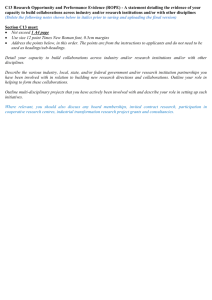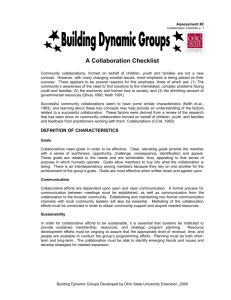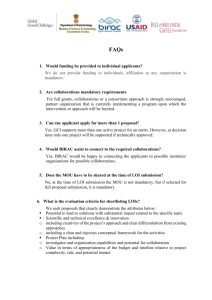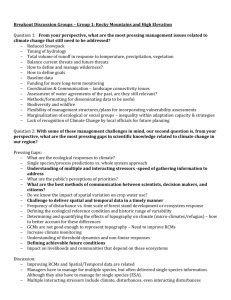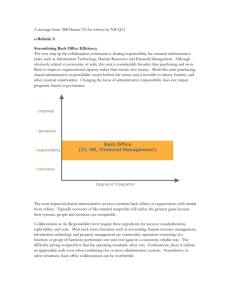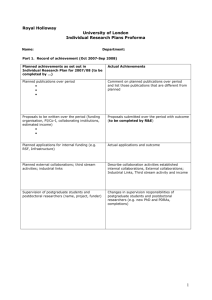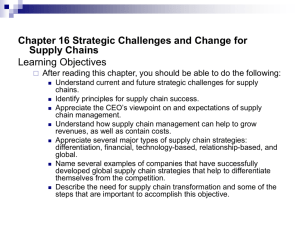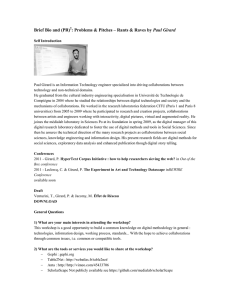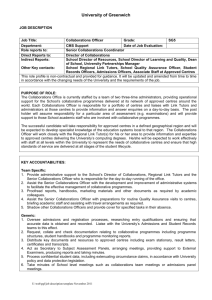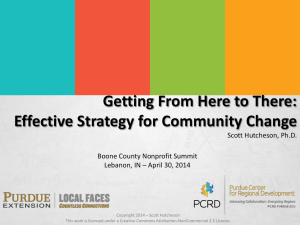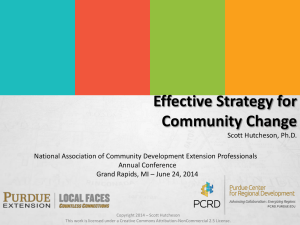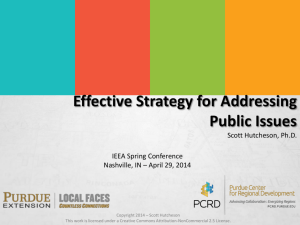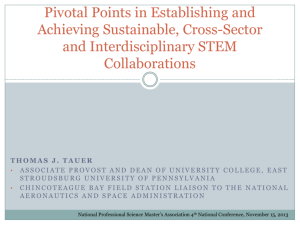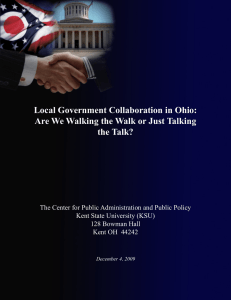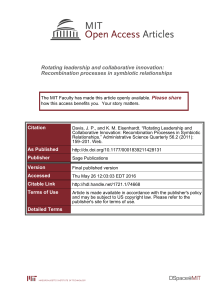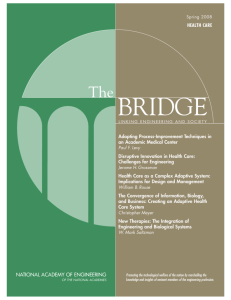Collaboration Checklist
advertisement
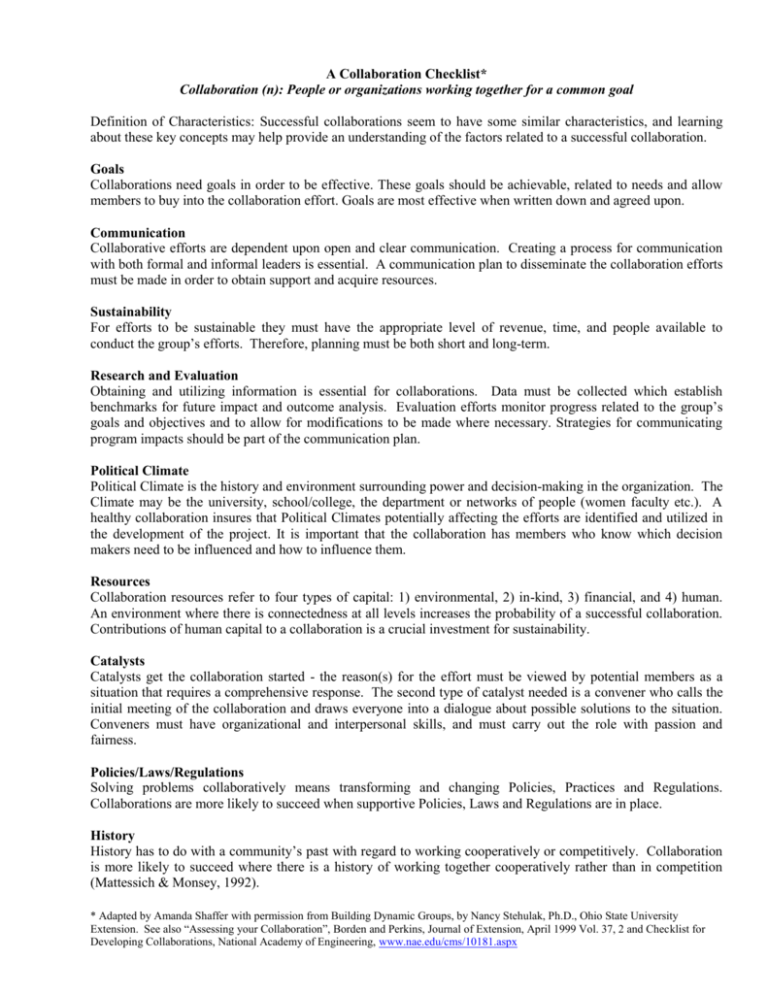
A Collaboration Checklist* Collaboration (n): People or organizations working together for a common goal Definition of Characteristics: Successful collaborations seem to have some similar characteristics, and learning about these key concepts may help provide an understanding of the factors related to a successful collaboration. Goals Collaborations need goals in order to be effective. These goals should be achievable, related to needs and allow members to buy into the collaboration effort. Goals are most effective when written down and agreed upon. Communication Collaborative efforts are dependent upon open and clear communication. Creating a process for communication with both formal and informal leaders is essential. A communication plan to disseminate the collaboration efforts must be made in order to obtain support and acquire resources. Sustainability For efforts to be sustainable they must have the appropriate level of revenue, time, and people available to conduct the group’s efforts. Therefore, planning must be both short and long-term. Research and Evaluation Obtaining and utilizing information is essential for collaborations. Data must be collected which establish benchmarks for future impact and outcome analysis. Evaluation efforts monitor progress related to the group’s goals and objectives and to allow for modifications to be made where necessary. Strategies for communicating program impacts should be part of the communication plan. Political Climate Political Climate is the history and environment surrounding power and decision-making in the organization. The Climate may be the university, school/college, the department or networks of people (women faculty etc.). A healthy collaboration insures that Political Climates potentially affecting the efforts are identified and utilized in the development of the project. It is important that the collaboration has members who know which decision makers need to be influenced and how to influence them. Resources Collaboration resources refer to four types of capital: 1) environmental, 2) in-kind, 3) financial, and 4) human. An environment where there is connectedness at all levels increases the probability of a successful collaboration. Contributions of human capital to a collaboration is a crucial investment for sustainability. Catalysts Catalysts get the collaboration started - the reason(s) for the effort must be viewed by potential members as a situation that requires a comprehensive response. The second type of catalyst needed is a convener who calls the initial meeting of the collaboration and draws everyone into a dialogue about possible solutions to the situation. Conveners must have organizational and interpersonal skills, and must carry out the role with passion and fairness. Policies/Laws/Regulations Solving problems collaboratively means transforming and changing Policies, Practices and Regulations. Collaborations are more likely to succeed when supportive Policies, Laws and Regulations are in place. History History has to do with a community’s past with regard to working cooperatively or competitively. Collaboration is more likely to succeed where there is a history of working together cooperatively rather than in competition (Mattessich & Monsey, 1992). * Adapted by Amanda Shaffer with permission from Building Dynamic Groups, by Nancy Stehulak, Ph.D., Ohio State University Extension. See also “Assessing your Collaboration”, Borden and Perkins, Journal of Extension, April 1999 Vol. 37, 2 and Checklist for Developing Collaborations, National Academy of Engineering, www.nae.edu/cms/10181.aspx Leadership The definition of an effective leader for a successful collaboration is one who impact change within their group and/or organization. Collaboration leadership should facilitate and support the efforts and capitalize upon diversity and individual, group and organizational strengths. Community Development Community development is the mobilizing your community to address important issues and build on its strengths. The collaboration begins the process of defining its vision, mission, values, principles and outcomes within the context of the attitudes, norms, beliefs and values of the larger community. Understanding Community Understanding the community (university or school level), including its people, culture(s) (department or discipline level), values and habits, provides the foundation for effective collaboration. It allows the collaboration leaders to gain a sense of the vision the community has for itself. The diversity of the strengths and weaknesses within the community will influence the success of the collaboration. Rate Your Collaboration Progress Rate how much you agree or disagree that each concept is part of your collaboration then add your scores. This concept is a part of my collaboration 1 Strongly Agree 2 Somewhat Agree 3 Neither Agree or Disagree 4 Somewhat Disagree 5 Strongly Disagree Goals Communication Sustainability Research and Evaluation Political Climate Resources Catalysts Policies/Laws/Regulations History Leadership Community Development Understanding Community Total Grand Total 0 - 30 31 - 48 49 - 65 Excellent! Your Collaboration has many components that comprise a successful collaboration. There are goals, working members and strong leadership. Strong! You have some components, however, there is some need to develop the inter-workings of the group. You are working toward goals but may need to think about how you work together. Good! Your collaboration has the desire to achieve goals but may need to refocus on leadership. Which concepts will help you move your ideas ahead? * Adapted by Amanda Shaffer with permission from Building Dynamic Groups, by Nancy Stehulak, Ph.D., Ohio State University Extension. See also “Assessing your Collaboration”, Borden and Perkins, Journal of Extension, April 1999 Vol. 37, 2 and Checklist for Developing Collaborations, National Academy of Engineering, www.nae.edu/cms/10181.aspx
